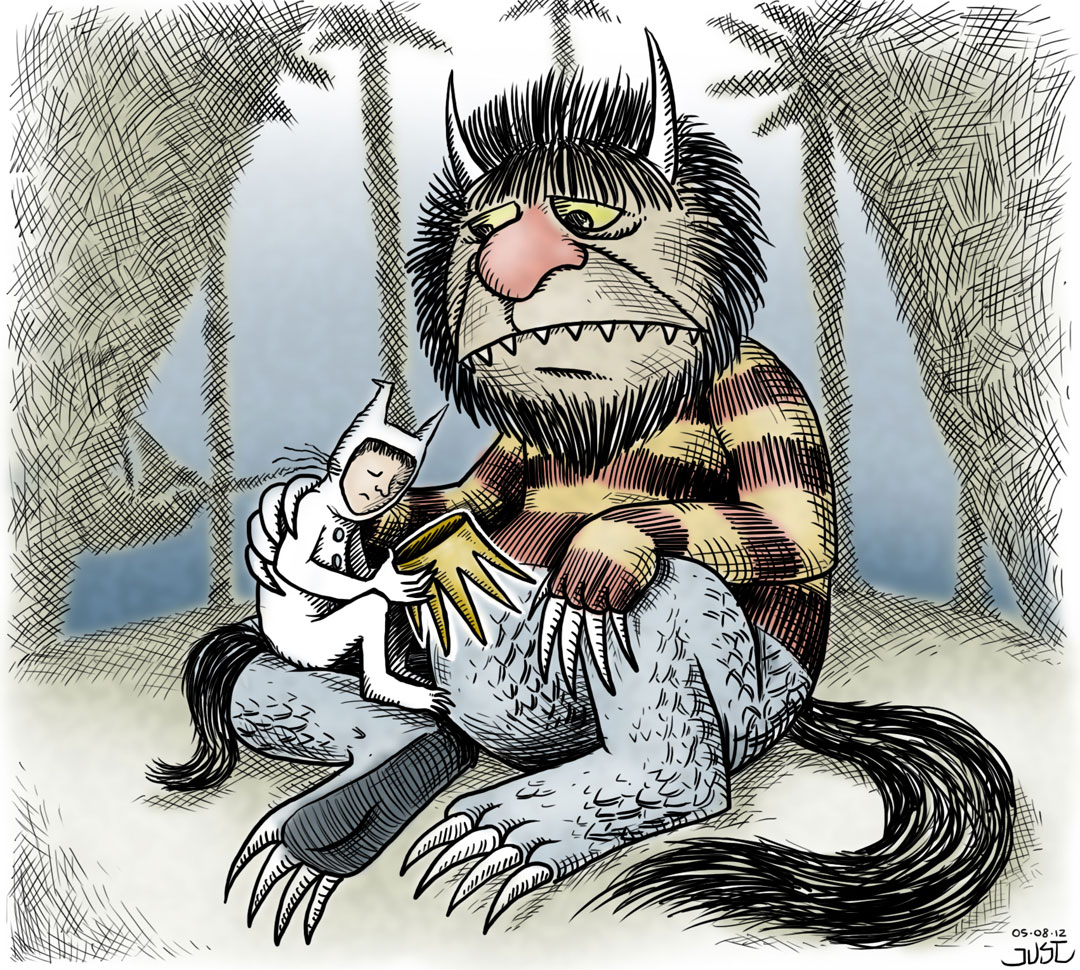I never met him but still feel like I’ve lost an old friend. Maybe we all lost a longtime friend this week. Maybe we thought he’d go on forever and I suppose in some ways he will.
Maurice Sendak’s death last week was widely reported including the Washington Post , on NPR , in the New York Times . The appreciations keep coming. And they should.
Sendak’s books have been read by several generations. They speak to contemporary kids as clearly as they did their parents and even their grandparents. We had shared Where the Wild Things Are so often that my son was able to “read” it aloud to the delight of his pre-K class.
Some of Maurice Sendak’s books have offended adult sensibilities (his fantastical In the Night Kitchen ; illustrations for a collection of Mother Goose rhymes entitled I Saw Esau , for example).
But his distinct style and unflinching respect for children and their ability to handle deep emotions whether or not they are able to talk about them is evident in each of his books. Sendak changed children’s literature forever because of his trust in children’s ability to recognize emotional truth.
Maurice Sendak will be missed but not forgotten.
Thanks to Justin Duvall for allowing his artwork to be used.

© 2012 Justin Duvall
About the Author
Reading Rockets’ children’s literature expert, Maria Salvadore, brings you into her world as she explores the best ways to use kids’ books both inside — and outside — of the classroom.
